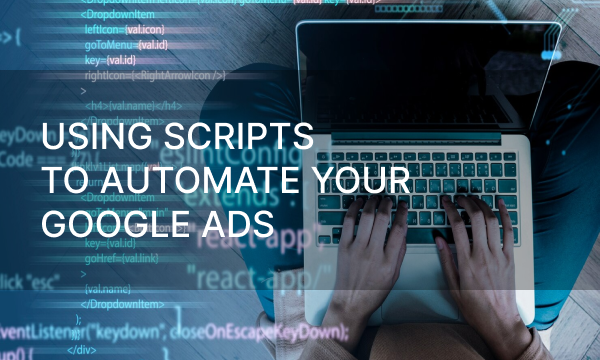There are many ways to spike consumer interest in an audience and drive it to your product or services online. However, sometimes those ways aren’t enough to generate consistent profit. Potential customers may want to learn about your offerings and their advantages compared to your competitors on the market, but for various reasons they may leave before acquiring any of your offered products or services, simply because they got distracted by their daily life. To regain their attention and turn that lost crowd into sales, you can implement retargeting strategies into your Google Ads marketing campaign.
Why You Should Implement Retargeting into Your Campaigns
Retargeting as a concept offers a variety of benefits when implemented into your marketing campaign. The most important of them, as it was briefly mentioned earlier, is the ability to re-engage your potential customers who have previously shown interest in your product. A significant part of those who left your website or landing page without making a purchase will return after viewing your retargeting adverts and they will have a much higher chance of engaging with your services.
Another great advantage of using retargeting strategies in your advertising campaign is exposing your brand to potential clientele. Even if recurring advertisements don’t succeed in bringing back a certain percentage of people, those who viewed your ads will more likely remember your brand and lean towards it later, when considering purchasing a product of your niche. In this sense, retargeting doesn’t always generate immediate profit, but rather creates wider potential for future gains and makes them more secure.
In addition to the previous point, retargeting helps generate the most relevant adverts for the people who have already viewed your product. A generalized ad that led them to your website in the first place is swapped for a more personalized version that is more likely to meet their needs.
While being an effective add-on to your advertisements, retargeting ads also tends to be a more affordable strategy, compared to other types of ads when it comes to pay-per-click prices. Contextual web query advertisements come less than $1.5 per click, making it almost twice as cheap as regular Google Ads advertisements of the same kind. This way retargeting adverts not only drive back potential customers, but additionally turn out to be a great substitute for context marketing, being more personalized, more affordable and more intuitive for the customer to follow.
All in all, implementing retargeting will be a convenient, affordable and efficient way of supporting your advertising campaigns, spreading word about your business, making your potential customers remember your brand and generating bigger profit down the road.
How Retargeting Works
When a potential customer sees your ad for the first time, if interested, they will proceed to your website or a landing page to view and assess the product or service you provide. For some customers, this initial analysis will be enough to make their final decision and conduct a purchase, but others may feel the need for your ads to be more convincing or may leave the decision making for a later time.
This is the moment where retargeting comes into play. Standard retargeting strategy starts by collecting specific user data upon their entry to the website and, if met with preset requirements, for example, visiting certain pages, but not making any purchase, will trigger your personalized retargeting ads to be shown to this user on other websites or similar web searches. After that the results play out typically into two scenarios:
- Bringing back the potential customer to your website for another look or a purchase, securing a deal and fulfilling their needs. This turn-out also results in gaining the customer’s choice and preference in future purchases of the same kind, creating place for potential future profit;
- Reminding the potential customer of your product or brand name, thus making them remember it for a future time. This way, even if the customer isn’t convinced to purchase anything at this time, your brand becomes more recognizable in the customer’s eyes, making it more likely for them to choose your product or services over others.
For example, a user searched for summer clothes and ended up on your website. They browsed through, added several items to the cart, but then left the website, because they got distracted or decided to postpone the purchase until a later time. After a while, the user forgot about their cart and the items they’d added to it and started looking for summer clothes on a different website or in the general search.
Your retargeting ads, with Google Ads having collected information on the user and tracked their movement across the web, have detected such web queries and were triggered to show, for example, sales banners for summer clothes or a beneficial deal on a certain item that was put into their cart earlier. This ad reminded the user of what they picked out on your website, thus bringing them back and significantly improving the chances of them making a purchase.
Creating a Retargeting Campaign in Google Ads
To get the most out of retargeting, you’ll need to get started by setting everything up. The first step is tagging, which will allow Google Ads to connect to your website or a landing page and to track information that comes along.
In the audience manager section found in the settings menu you will be able to set up Google Ads tags. First, you’ll get to choose what data Google Ads will be collecting depending on what you need – whether its generalized viewing to previous visitors or more personalized ads to those who have performed specific actions on your website, for example, adding items to the cart. Then you’ll need to pick a business type that generally describes your product or services provided, for example, travel or retail, which will allow more accurate data to be collected.
After these steps you’ll need to link your Google Ads tag to your website by manually applying the script into your website’s pages’ code. This can be easily done by following the instructions given by Google Ads in the same settings menu. This way, every time each linked page is visited, the tag will automatically collect necessary data and allow Google Ads to analyze it and use it for generating future personalized ads for retargeting purposes.
Finally, make sure that everything is working properly before you start running. Once you’re certain everything is correct, your retargeting setup is ready.
In Conclusion
Although there are many tools and tips to draw potential customers to your business and inform them about your business, sometimes it isn’t enough to secure a purchase. There are many factors that affect potential customers on their way to a purchase, starting from competitors’ advertisements and ending with outside distractions of each individual user’s life, like the need to save up for a purchase, or prioritize other products, and so on.
The main goal of retargeting advertising strategies is reminding potential customers of your brand and helping them remember it in the long run. This way not only do you bring back the people who have already shown interest in your product or services, but also make sure they are more likely to choose you in the future as well, thus building a wider base of customers.
Retargeting advertisements are easy to set up and you can track their efficiency via Google Ads built-in tools, which allows your overall marketing campaign to work more effectively and smoothly, enabling you to adjust campaign settings on-the-go.
That being said, there is no reason not to implement retargeting into your marketing campaigns in Google Ads, as it has no downsides and serves as a great addition to your pre-existing advertisements while remaining simple and quick to set up.



![How to Drive More Google Ads Clicks on a Lower Budget [3 Automated Tools]](https://blog.promonavigator.com/wp-content/uploads/2020/03/more-clicks-600-360.jpg)